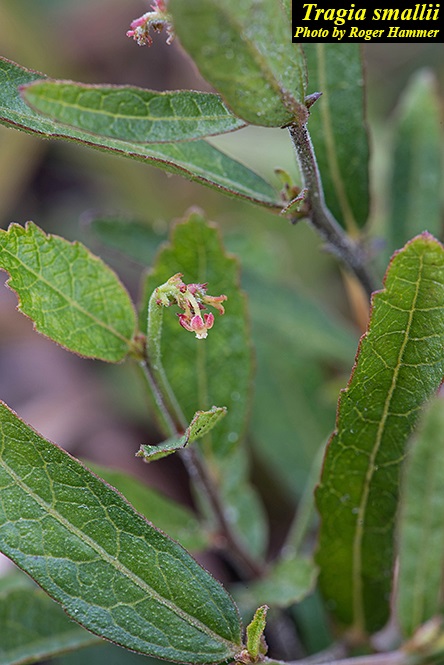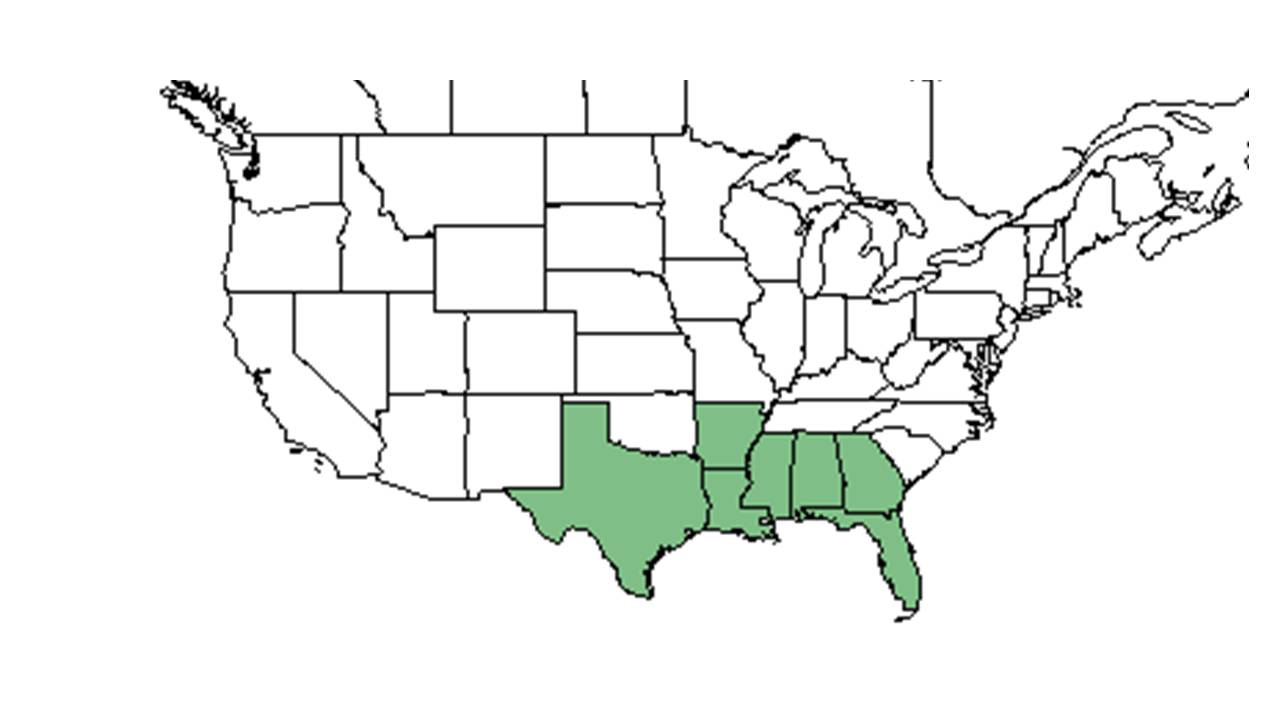Difference between revisions of "Tragia smallii"
| Line 3: | Line 3: | ||
{{taxobox | {{taxobox | ||
| name = Tragia smallii | | name = Tragia smallii | ||
| − | | image = | + | | image = Trag_smal.jpg |
| − | | image_caption = | + | | image_caption = Photo by Roger Hammer, [http://www.florida.plantatlas.usf.edu/ Default.aspx Atlas of Florida Vascular Plants] |
| regnum = Plantae | | regnum = Plantae | ||
| divisio = Magnoliophyta – Flowering plants | | divisio = Magnoliophyta – Flowering plants | ||
| Line 41: | Line 41: | ||
<!--===Use by animals===--> <!--Herbivory, granivory, insect hosting, etc.--> | <!--===Use by animals===--> <!--Herbivory, granivory, insect hosting, etc.--> | ||
<!--===Diseases and parasites===--> | <!--===Diseases and parasites===--> | ||
| − | ==Conservation and | + | ==Conservation and management== |
==Cultivation and restoration== | ==Cultivation and restoration== | ||
==Photo Gallery== | ==Photo Gallery== | ||
Revision as of 18:40, 11 July 2016
| Tragia smallii | |
|---|---|

| |
| Photo by Roger Hammer, Default.aspx Atlas of Florida Vascular Plants | |
| Scientific classification | |
| Kingdom: | Plantae |
| Division: | Magnoliophyta – Flowering plants |
| Class: | Magnoliopsida – Dicotyledons |
| Order: | Euphorbiales |
| Family: | Euphorbiaceae |
| Genus: | Tragia |
| Species: | T. smallii |
| Binomial name | |
| Tragia smallii Shinners | |

| |
| Natural range of Tragia smallii from USDA NRCS Plants Database. | |
Common name: Small's noseburn
Contents
Taxonomic notes
Description
Distribution
Ecology
Habitat
In the Coastal Plain in Florida and Georgia, T. smallii can be found in recently burned scrubs, scrub oak-wiregrass communities, wiregrass-pine flatwoods, longleaf pine/wiregrass/scrub oak sandhills, recently burned longleaf pine/wiregrass communities, pine savannas, and around ephemeral ponds (FSU Herbarium; [1]). It can also be found along old logging roads, recreation areas, and bulldozed wiregrass-pinewoods. Soil types include loamy sand, sand, sandy loam, and loamy soil (FSU Herbarium). Associated species include Liatris, Panicum, Leptoloma cognata, Sphenopholis nitida, Euphorbia inundata, Paspalum, Rhynchospora, Macbridea, and Justicia crassifolia (FSU Herbarium).
Phenology
It has been observed flowering May through October and fruiting April through August (FSU Herbarium).
Seed dispersal
According to Kay Kirkman, a plant ecologist, this species disperses by explosion mechanisms or by ants. [2]
Fire ecology
It is fire tolerant; Tragia smallii was found frequently on plots in the Kisatchie National Forest burned 20 times each in March and July from 1962 to 1998, but rarely on plots burned in May. [1]
Conservation and management
Cultivation and restoration
Photo Gallery
References and notes
Florida State University Robert K. Godfrey Herbarium database. URL: http://herbarium.bio.fsu.edu. Last accessed: July 2015. Collectors: Loran C. Anderson, H. E. Grelen, Sidney McDaniel, Angus Gholson, Travis MacClendon, Karen MacClendon, Annie Schmidt. States and Counties: Florida: Calhoun, Franklin, Gadsden, Gulf, Liberty, Okaloosa, Santa Rosa, Wakulla, Walton, Washington. Georgia: Thomas. Compiled by Tall Timbers Research Station and Land Conservancy.